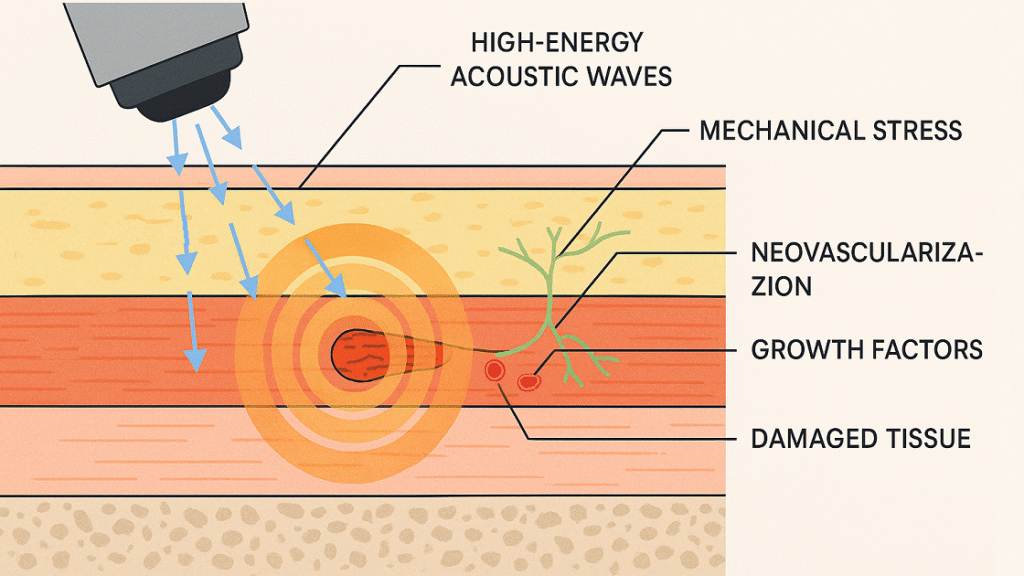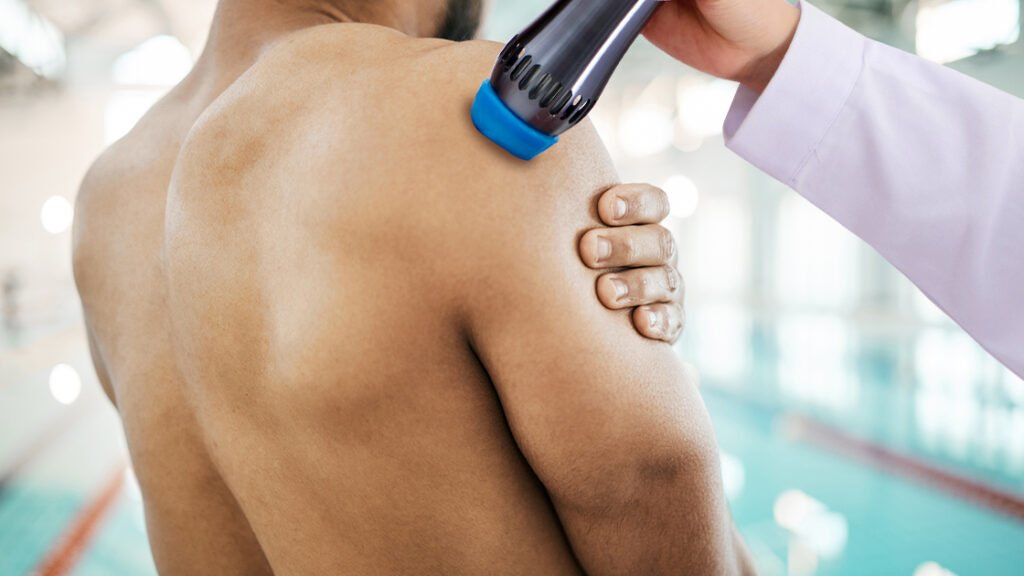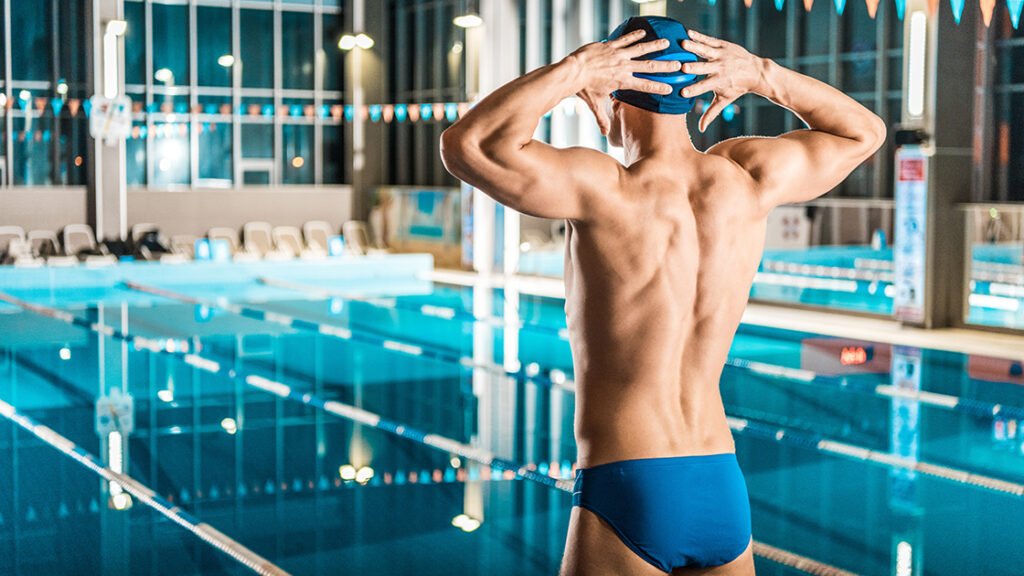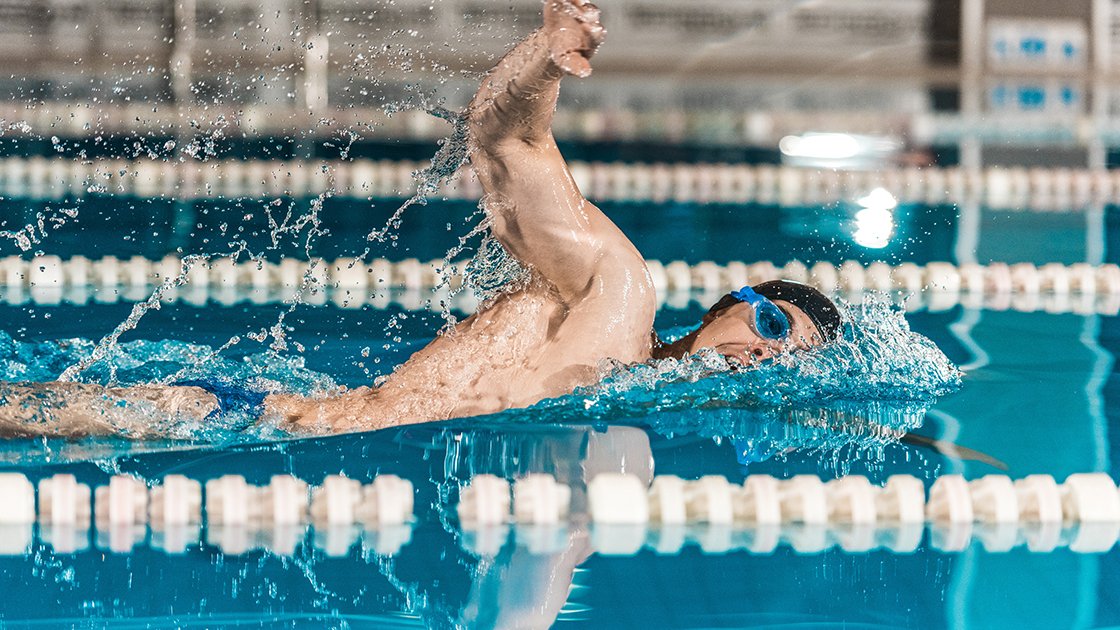Introduction: The Challenge of Swimming Injuries
Swimming is widely seen as a low-impact, joint-friendly sport—but it’s not injury-proof. Both competitive and recreational swimmers face a high risk of overuse injuries due to repetitive strokes and intense training schedules. Common issues like shoulder impingement, tendinitis, and back strain can sideline athletes for weeks or months. Traditional treatments—rest, physical therapy, or even surgery—often lead to long recovery times and inconsistent results. For swimmers aiming to stay in the water, such delays can be frustrating. That’s where shockwave therapy steps in. As a non-invasive, fast-acting treatment, it’s changing how swimming injuries are managed, helping athletes recover more quickly and return to training stronger than before.
Common Types of Swimming Injuries
Swimming injuries fall into two main types: acute injuries from sudden trauma and chronic overuse injuries from repetitive motions. Acute injuries, such as muscle strains, joint sprains, or collisions, happen less often but can occur during training or competitions. Most injuries, however, are chronic and caused by repeated stress and inadequate recovery. The shoulder is the most affected area, responsible for 40–60% of cases. This is because swimming strokes demand extreme shoulder mobility and strength against water resistance. The repeated overhead movements strain muscles, tendons, ligaments, and bursae, causing microtrauma that accumulates over time. Recognizing this injury pattern is vital for effective prevention and treatment.
Why Swimming Injuries Need Specialized Care
Swimming’s unique biomechanical demands require specialized care. Unlike land sports, swimming involves fluid, repetitive motions that stress the body differently. Even small technique flaws can cause significant tissue damage over time due to high stroke repetition. The sport uses complex, multi-directional movements involving the whole kinetic chain, so treatment must address underlying movement patterns, not just symptoms. Swimmers often train intensely—up to 10,000 meters daily—making rest-based recovery impractical during peak seasons. Therefore, therapies that promote healing without interrupting training, like shockwave therapy, are especially valuable. They help reduce pain, accelerate tissue repair, and support ongoing performance during recovery.
Definition and Mechanism of Shockwave Therapy
Shockwave therapy, or Extracorporeal Shock Wave Therapy (ESWT), is a non-invasive treatment using high-energy acoustic waves to heal damaged tissues. Originally developed for urology, it now treats musculoskeletal injuries with minimal downtime. These waves penetrate deep into tissue without harming the surface, inducing mechanical stress that triggers cellular responses called mechanotransduction. This process promotes growth factor release, increases blood flow via new vessel formation, and attracts stem cells to the area. Shockwave therapy also creates controlled microtrauma to stimulate natural repair, breaking down scar tissue and calcifications. It activates inflammatory pathways essential for tissue regeneration and modulates pain by disrupting nerve signals and releasing natural painkillers. Together, these effects provide both quick pain relief and long-term healing, making shockwave therapy a valuable option for musculoskeletal recovery.

How Shockwave Therapy Helps Swimming Injuries
The application of shockwave therapy to swimming injuries represents a paradigm shift in sports medicine, offering targeted treatment that addresses the specific pathophysiological processes underlying these conditions. The therapy’s multifaceted approach to healing makes it particularly well-suited for the complex injury patterns commonly seen in swimmers.
Promoting Faster Tissue Healing
Shockwave therapy promotes faster tissue healing by stimulating cellular metabolism, increasing ATP production at the mitochondrial level. This energy boost accelerates repair processes across injured tissues. The treatment also induces angiogenesis—forming new blood vessels—which improves oxygen and nutrient delivery to damaged areas. Studies show tissue perfusion can improve by up to 30%, aiding both immediate and long-term healing. Additionally, shockwave therapy supports collagen synthesis and alignment. Since collagen is the backbone of tendons and ligaments, this process strengthens tissue structure, enhances elasticity, and reduces scar tissue formation. As a result, treated tissues regain their natural resilience and function more quickly.
Reducing Pain and Inflammation
Shockwave therapy relieves pain through both mechanical and neurochemical pathways. The mechanical stimulation disrupts pain transmission using the gate control theory, “closing the gate” to incoming pain signals. It also triggers the release of endorphins and other natural pain relievers, providing long-lasting analgesic effects. In terms of inflammation, shockwave therapy doesn’t just suppress it—it modulates it. By reducing harmful cytokines and promoting regenerative ones, the treatment transitions the body from a chronic inflammatory state to an active healing phase. This dual pain-and-inflammation relief helps swimmers recover faster without relying on drugs or invasive treatments.
Enhancing Range of Motion and Functionality
Swimming injuries often limit range of motion, especially in the shoulders. Shockwave therapy restores movement by breaking down scar tissue and adhesions that restrict mobility. At the same time, it promotes the development of healthy, organized tissue that moves more freely. The therapy also reduces muscle tightness and improves flexibility by affecting neuromuscular tone. These combined effects help reestablish proper movement patterns essential for swimming strokes. By improving both tissue extensibility and muscular coordination, shockwave therapy plays a key role in regaining optimal biomechanics and preventing future injury.
Clinical Case Highlights: Real Swimmers, Real Results
Clinical studies confirm the effectiveness of shockwave therapy for swimming injuries. In one trial, 85% of swimmers with chronic shoulder impingement returned to full training within six weeks after shockwave therapy, compared to 12 weeks with traditional care. Pain scores dropped by 70% on average. Another case series on lower back injuries showed improved pain control, flexibility, and stroke efficiency post-treatment. These outcomes highlight shockwave therapy’s ability to reduce downtime, enhance performance, and support a safe return to sport—especially in athletes with high training demands.
Common Swimming Injuries Treated with Shockwave Therapy
The versatility of shockwave therapy makes it an excellent treatment option for the wide range of injuries commonly encountered in swimming. Understanding how the therapy addresses specific injury patterns helps both athletes and healthcare providers make informed treatment decisions.
Rotator Cuff Injuries and Swimmer’s Shoulder
Swimmer’s shoulder, or shoulder impingement syndrome, is the most common injury among competitive swimmers. It occurs when the rotator cuff tendons—especially the supraspinatus—are compressed within the subacromial space, causing pain, inflammation, and limited shoulder function. Repetitive overhead strokes aggravate this condition and may lead to tendinosis or partial tears. Shockwave therapy relieves symptoms by breaking down calcifications and adhesions, improving subacromial space and tendon movement. It also stimulates tendon healing, increases blood flow, and reduces inflammation—enabling faster, non-invasive recovery for swimmers.
Tendonitis and Bursitis in Shoulders and Elbows
Swimmers frequently suffer from bicipital tendinitis and subacromial bursitis due to overuse and repetitive overhead motion. Bicipital tendinitis affects the biceps tendon during freestyle and backstroke, while subacromial bursitis often coexists with rotator cuff issues. Both conditions cause pain, swelling, and restricted movement. Shockwave therapy reduces inflammation in both tendons and bursae, promotes blood circulation, and stimulates collagen regeneration. It helps break the cycle of chronic inflammation and impingement, restoring mobility and allowing swimmers to return to training more quickly.
Lower Back and Lumbar Strain
Lower back pain in swimmers typically results from the repetitive spinal extension and rotation during strokes like butterfly and backstroke. Muscles such as the erector spinae and quadratus lumborum are frequently strained from poor technique, core fatigue, or muscle imbalances. Shockwave therapy promotes healing in affected muscle tissues, reduces inflammation, and restores neuromuscular balance. It can also help correct compensatory patterns by addressing soft tissue tension and improving flexibility, making it an effective tool for managing both acute and chronic lumbar strain.
Knee Pain and Overuse Injuries
Swimmers—especially breaststrokers—are prone to knee issues due to the whip kick’s unique biomechanics. Medial collateral ligament strain, or “breaststroker’s knee,” results from repetitive valgus stress. Patellofemoral pain syndrome may also develop from overtraining, poor biomechanics, or repetitive knee flexion during flip turns. Shockwave therapy reduces inflammation, promotes ligament healing, and improves soft tissue mobility around the knee. It also helps correct muscular imbalances contributing to pain, making it ideal for treating overuse knee injuries in swimmers.
Plantar Fasciitis and Ankle Strains
Foot and ankle injuries in swimmers stem from repeated plantarflexion during kicking and push-offs. Plantar fasciitis causes heel pain due to overstretching of the foot arch’s supporting tissue, while ankle strains involve tendons like the posterior tibialis from extreme plantarflexion. Shockwave therapy promotes healing of soft tissue injuries, improves microcirculation, and reduces chronic heel and ankle pain. It also breaks down adhesions and scar tissue that limit range of motion—restoring kicking power and helping swimmers maintain optimal propulsion in the water.
What to Expect During Shockwave Therapy Treatment
Understanding the shockwave therapy treatment process helps patients prepare for their sessions and optimize their treatment outcomes. The procedure follows a systematic approach designed to maximize therapeutic benefits while ensuring patient safety and comfort.

Initial Assessment and Diagnosis
Shockwave therapy begins with a detailed assessment to identify not just symptoms, but the root causes of injury. Clinicians take a thorough history, including training habits, stroke technique, and previous treatments. A focused physical exam evaluates pain sites, range of motion limitations, and muscular imbalances. Palpation helps locate trigger points and tissue restrictions needing targeted therapy. When necessary, imaging—especially musculoskeletal ultrasound—is used to assess soft tissue integrity and guide treatment. Ultrasound can enhance precision by pinpointing injured tendons or bursae. This comprehensive diagnostic approach ensures shockwave therapy is personalized, safe, and directed at the most relevant anatomical structures.
Treatment Procedure Step-by-Step
Shockwave sessions follow a structured protocol that balances effectiveness and comfort. The patient is positioned to expose the target area while maintaining relaxation. A conductive gel is applied to improve acoustic wave transmission and eliminate air gaps. The clinician then applies the shockwave device directly to the skin, adjusting parameters like frequency, pressure, and pulse count according to the condition’s severity and the patient’s tolerance. Sessions typically last 10–20 minutes and may be repeated weekly over 3–6 weeks. This non-invasive process stimulates healing without anesthesia or downtime, allowing athletes to maintain most of their routine between sessions.
Post-Treatment Care and Recovery Tips
- Avoid NSAIDs: Don’t take anti-inflammatory medications for at least 48 hours post-treatment; they can hinder the body’s natural healing response.
- Modify Training: Limit or adjust swimming and dryland training to avoid stressing the treated area during the healing phase.
- Stay Active: Gentle movement is encouraged to support circulation and prevent stiffness—just avoid intense loading or overstretching.
- Hydration is Key: Drink plenty of water to flush out cellular waste and support the metabolic healing response.
- Nutrition Support: Maintain a diet rich in protein, vitamins C and D, and anti-inflammatory foods to optimize recovery.
- Monitor Response: Some soreness is normal; report sharp or increasing pain to your provider for reassessment.
Advantages of Shockwave Therapy Over Traditional Treatments
The growing popularity of shockwave therapy among swimmers and healthcare providers reflects its significant advantages over conventional treatment approaches. These benefits extend beyond simple effectiveness to include practical considerations that make the therapy particularly attractive for active athletes.
Non-Invasive and Drug-Free Approach
Shockwave therapy offers a safe, non-invasive alternative to surgery, requiring no incisions, anesthesia, or lengthy downtime. It’s performed in outpatient settings and allows patients to resume normal activities quickly. Its drug-free nature is especially beneficial for athletes avoiding banned substances or the side effects of long-term medication use. This aligns with modern trends favoring natural, holistic healing methods. Unlike surgery, shockwave therapy can be repeated without added risk, making it adaptable to an athlete’s evolving condition. This flexibility supports long-term treatment planning, especially for chronic or recurring injuries.
Faster Recovery Times and Reduced Recurrence
Shockwave therapy accelerates recovery by stimulating tissue repair, often reducing healing time from months to weeks. This is vital for swimmers needing a quick return to training. Because it addresses the root cause—damaged or poorly healing tissue—rather than just symptoms, it also reduces the chance of reinjury. Athletes benefit from being able to continue light training during treatment, maintaining fitness and stroke efficiency. Long-term studies show fewer injury relapses in patients treated with shockwave therapy compared to those using traditional rehab alone.
Cost-Effectiveness and Accessibility
Shockwave therapy offers long-term savings by reducing treatment duration, preventing complications, and cutting down on missed training or competition. Unlike surgery, which incurs hospital, anesthesia, and post-op costs, shockwave is delivered in-office with minimal aftercare. This makes it accessible to athletes in diverse settings without specialized surgical facilities. As clinical evidence grows, more insurers are starting to cover it, improving access further. For swimmers balancing performance and budget, this therapy combines medical efficacy with economic efficiency.
Minimal Side Effects Compared to Surgery or Steroids
Shockwave therapy has a low risk profile, with mild, short-lived side effects such as localized soreness or redness that usually resolve within 48 hours. It avoids the complications of surgery—like infection, anesthesia reactions, or scarring—and doesn’t carry the long-term risks of steroid injections, such as tissue weakening. This makes it a safer option for younger or medically complex athletes who aren’t ideal candidates for invasive procedures. Its gentle yet effective action allows earlier treatment and reduces the risk of minor injuries worsening over time.

Who Should Consider Shockwave Therapy?
While shockwave therapy offers benefits for a wide range of patients, certain groups may be particularly well-suited for this treatment approach. Understanding the ideal candidates helps ensure optimal treatment outcomes and appropriate resource allocation.
Competitive and Recreational Swimmers
Competitive swimmers benefit greatly from shockwave therapy due to their intense training and urgent need for fast recovery. The treatment helps them heal quickly without halting all physical activity, making it ideal for those facing upcoming meets or camps. Recreational swimmers, while training less aggressively, still value the reduced pain and quicker recovery times. Shockwave therapy helps them maintain consistency in their fitness routines. Masters swimmers—often dealing with age-related tissue degeneration or old injuries—can find the treatment especially useful. Its ability to enhance tissue quality and support healing helps them stay active and perform comfortably as they age.
Athletes with Chronic or Recurrent Injuries
Shockwave therapy is ideal for athletes with persistent or recurring injuries that haven’t responded to traditional rehab. These injuries often stem from poor tissue quality or biomechanical faults. The therapy improves tissue regeneration and reduces inflammation, helping break the cycle of repeated strain. Athletes stuck in a pattern of healing and re-injury often find lasting relief with this approach. It also corrects compensatory movement patterns formed in response to chronic pain, reducing the risk of new, secondary injuries. For those managing long-standing issues, shockwave therapy can restore both function and confidence.
Patients Seeking Alternatives to Surgery or Medication
Not all patients are good surgical candidates—due to age, medical conditions, or personal preference. Shockwave therapy offers a non-invasive option with minimal risk and no anesthesia. It’s also drug-free, which appeals to athletes under anti-doping rules or those avoiding painkillers and steroids. Unlike medications that mask symptoms, shockwave therapy promotes actual healing. For patients disillusioned with prior treatments or cautious about surgery, this method offers a conservative but effective approach. It allows for trial without major commitment, making it a flexible first step toward recovery.
Frequently Asked Questions (FAQ)
Shockwave therapy uses acoustic waves to “wake up” your body’s natural repair cells. It boosts blood flow, breaks down scar tissue, and stimulates stem cells—kind of like jump-starting your body’s own healing superpower.
Most patients feel a mild tapping or tingling sensation, but it’s generally well-tolerated. The intensity is adjustable, so your therapist customizes it to your comfort level.
One of the best parts—shockwave therapy usually requires little downtime. Many swimmers resume modified training within days, keeping you active while your body heals.
Yes! By improving tissue quality and breaking the cycle of chronic inflammation, it helps reduce the chance of recurring injuries—think of it as injury-proofing your muscles and tendons.
Results vary, but many swimmers notice improvement within 3 to 5 sessions. Your care plan will depend on injury severity and your response to treatment.
Absolutely. It’s non-invasive and drug-free, making it a great option for everyone from young competitive swimmers to masters athletes who want to keep moving pain-free.
Conclusion: Get Back to the Pool with Shockwave Therapy
Swimming injuries don’t have to mean long breaks or lasting setbacks. Shockwave therapy offers swimmers a faster, more effective path to recovery by targeting the root causes of injury rather than just symptoms. This non-invasive treatment promotes real tissue healing, reduces pain, and helps prevent future issues. Research shows shockwave therapy delivers better results than many traditional treatments, with minimal downtime—ideal for swimmers at all levels. It’s especially valuable for those dealing with chronic shoulder pain or tendinitis who want to keep training without long interruptions. Success depends on early treatment and guidance from healthcare providers familiar with swimming’s unique demands. Combined with rehab exercises and technique tweaks, shockwave therapy not only heals injuries but also lowers the risk of recurrence. Ready to answer the water’s call? Shockwave therapy can help you overcome injury and return to peak performance confidently—don’t let pain hold you back from reaching your potential.
References
- Efficacy and safety of extracorporeal shock wave therapy for upper limb tendonitis: a systematic review and meta-analysis of randomized controlled trials
- Effect of extracorporeal shock wave therapy for rotator cuff injury: Protocol for a systematic review and meta-analysis
- Extracorporeal shock wave therapy mechanisms in musculoskeletal regenerative medicine
